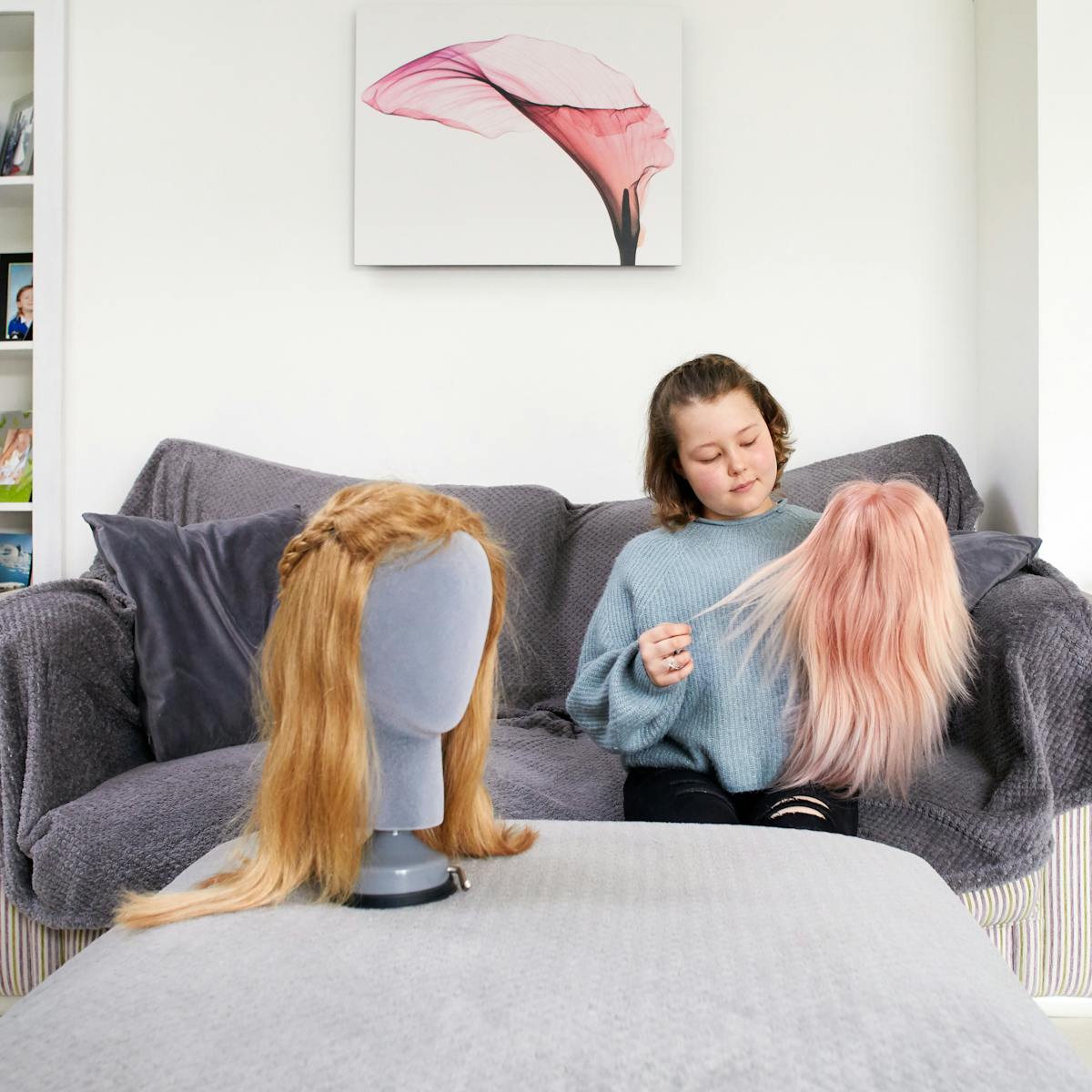Our hair affects how we look and feel, and sudden, unwanted change is difficult to deal with. For young people with cancer, hair loss is often one of their biggest fears. A good wig can make a huge difference. Photographer Carmel King documents some of the processes and people involved with a charity providing beautiful human-hair wigs for kids.
Teiva was nine years old when she found out she had leukaemia. Her first question when she understood that leukaemia meant cancer was, “Does that mean I will lose my hair, Mummy?” Her hair was long and blonde, and it felt like an important part of who she was and how she fitted in. For Teiva’s mum, Dawn, answering that question was one of her worst moments.
But they were determined to be positive, chatting about how Teiva could have fun with fancy hats and wear wigs in whatever colour she wanted, even pink. Treatment began just three days after diagnosis, and Teiva’s hair quickly started to fall out. She cut it into a short bob, then shaved it off once she left hospital.
Wigs are expensive, and Dawn was relieved to find out about a charity providing them to young people for free. Within days of contacting the Little Princess Trust, Teiva was sent a top-quality, hand-knotted wig made from donated human hair, closely matched to her own hair colour and length.
Remembering what it was like to wear the wig for the first time, Teiva says, “It felt really nice that I wasn’t the odd one out any more. I got a lot of funny looks when I was bald, but I was normal with my wig on. It made my head very hot, but I loved it. I wore it quite a lot when I first got it. Then I started to wear it at certain times – for school, or going to the shops, or special events.”
Teiva’s hair grew back fluffy and thin. It was about an inch long when further treatment meant she lost it again. She was entitled to another wig and this time the charity dyed it a gorgeous shade of pale pink. It arrived just in time for her tenth birthday. Teiva was thrilled.
“I would never let her dye her hair, but oddly enough the pink wig was fine,” says Dawn. “We ended up preferring it over the natural one.”
Donation sorting centre
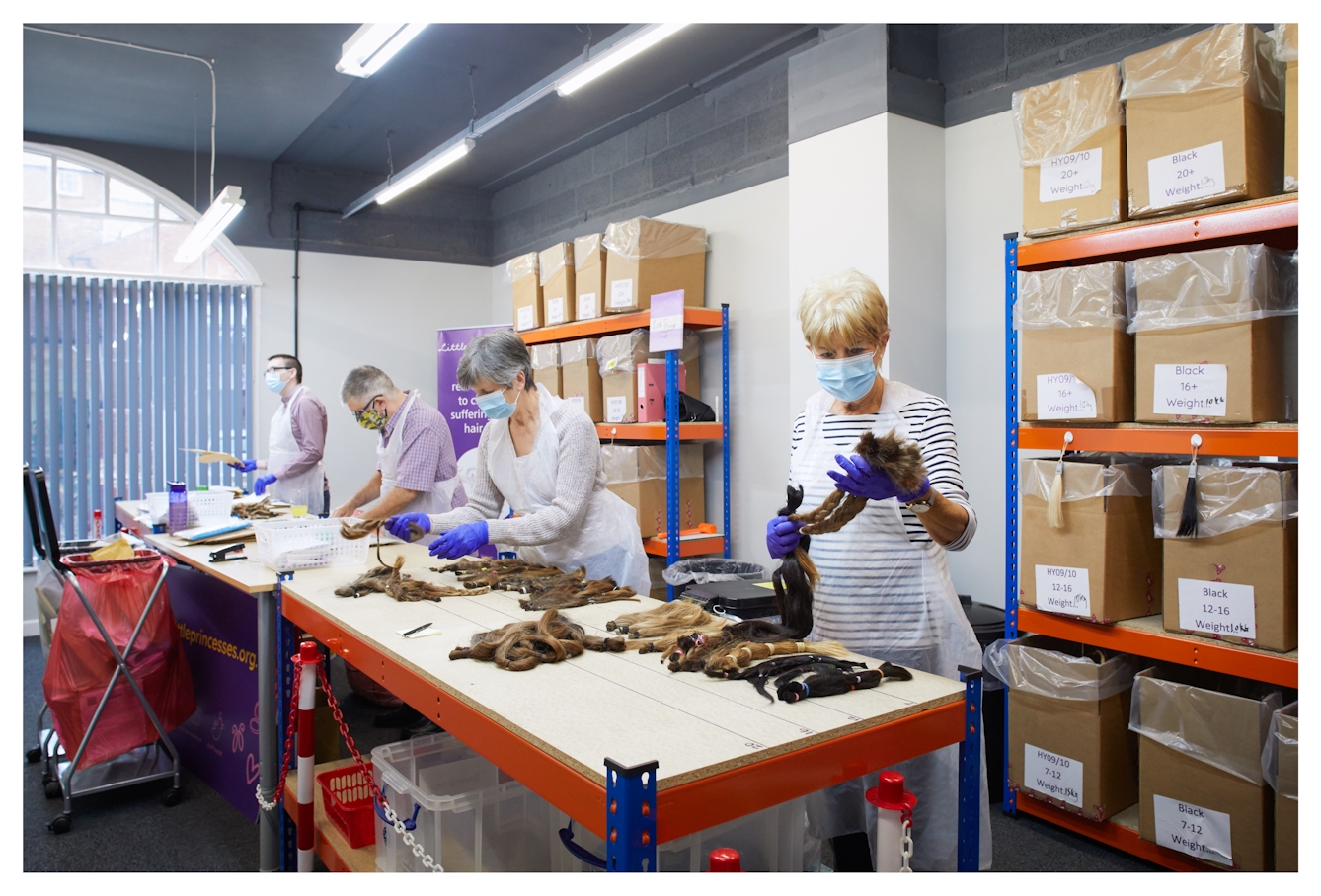
The Little Princess Trust was named for Hannah Tarplee, but the charity doesn’t just help young girls. It provides real-hair wigs for children, teenagers and young adults of all genders. The charity, based in Hereford, receives thousands of hair donations a year. Once unpacked, the hair is hand-sorted by a dedicated team of volunteers.
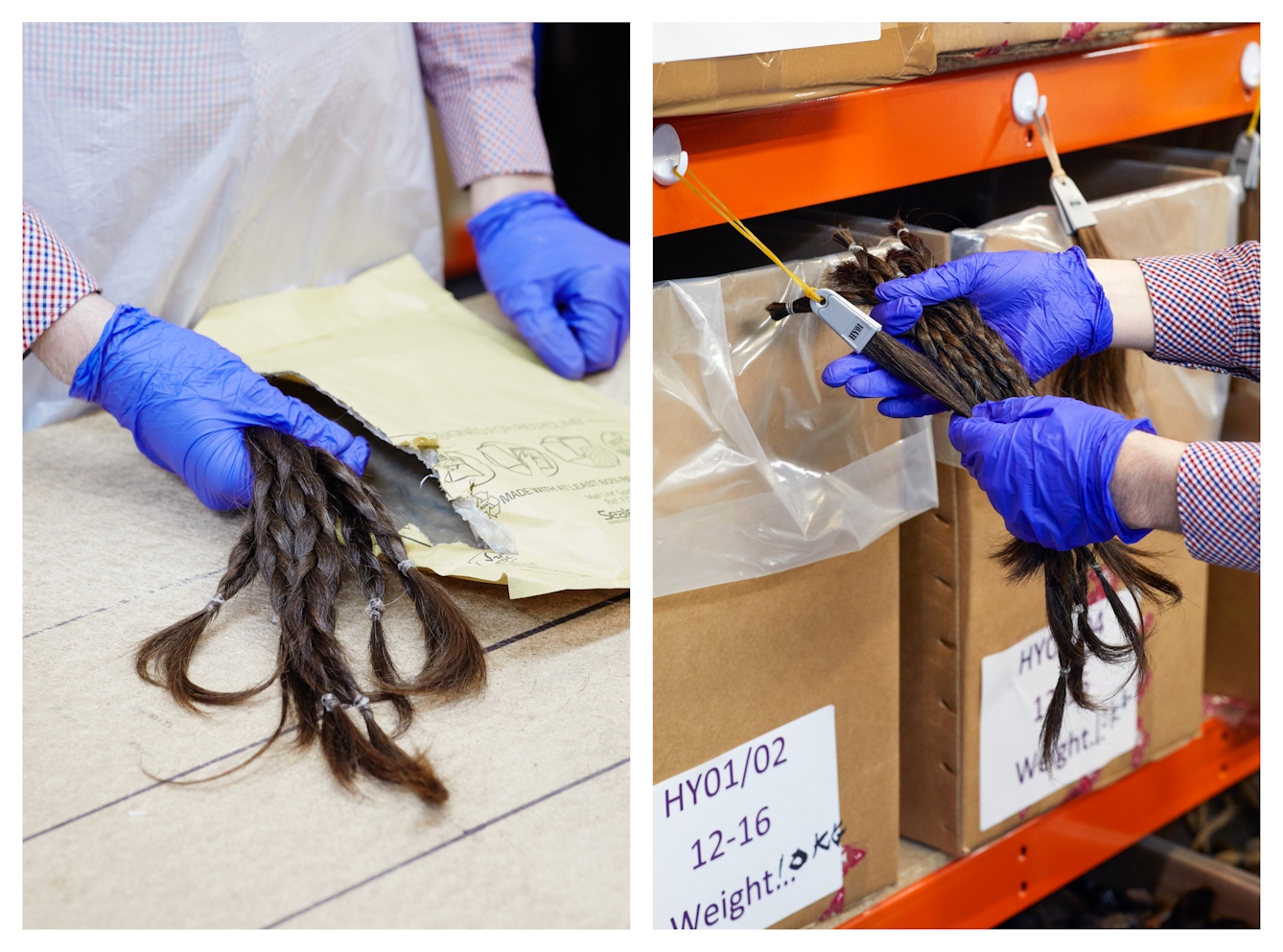
The donated hair is sorted it into 13 colours and four lengths. The hair is then sent to the manufacturers for processing. Most of the Trust’s wigs are made in China, handmade by expert wig makers. A high-quality human-hair wig looks more realistic, is more comfortable to wear and is longer lasting than an artificial-hair one.

It can take up to 15 individual donations to make a single wig, while the knotting process can take anything from 30 to 60 hours. Around two inches is lost from the length during the tying process, which is why longer hair donations are best for the wig maker to work with.
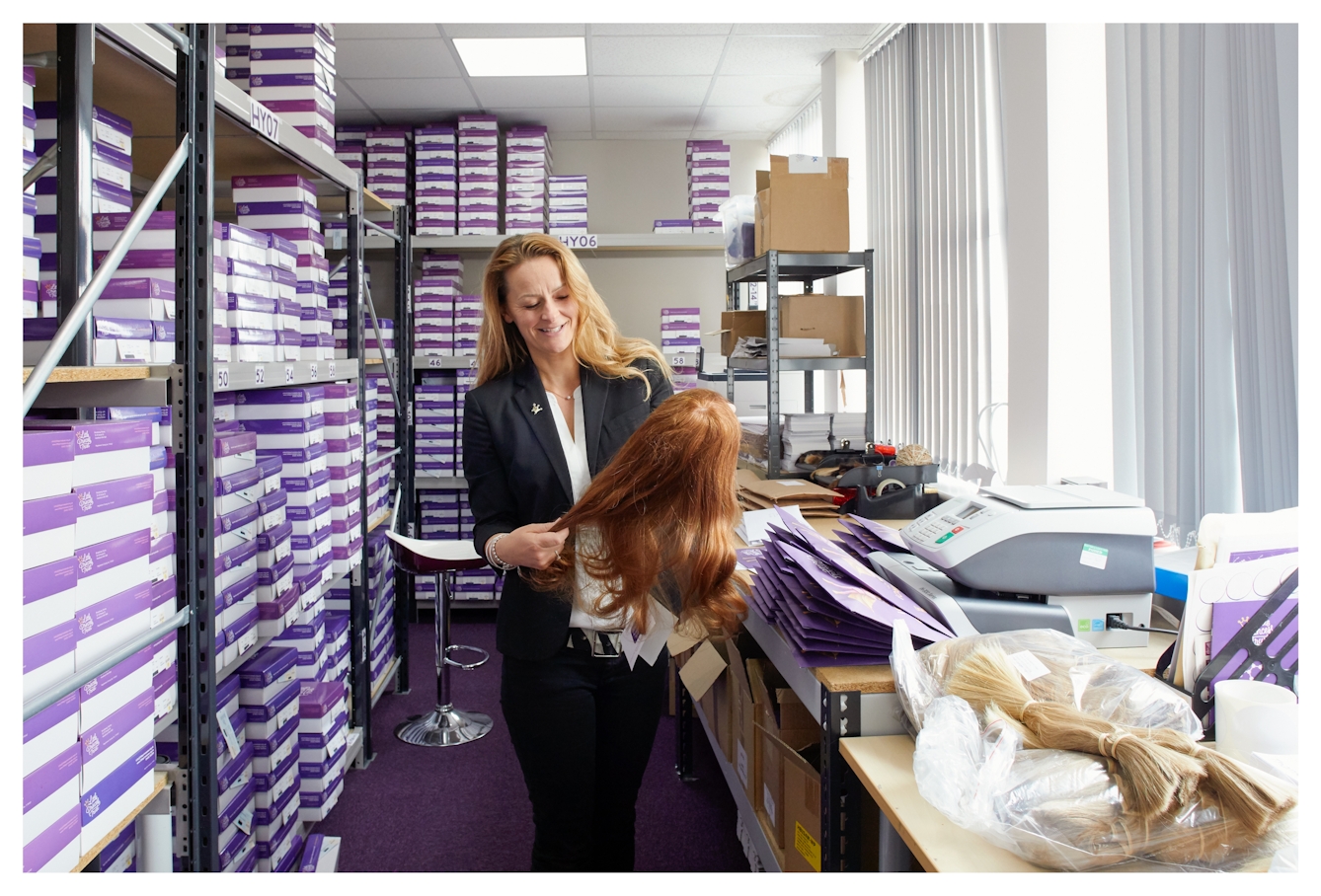
Wendy Tarplee-Morris, the co-founder of the Little Princess Trust, looks at one of the finished wigs that will be sent out to a young person suffering hair loss. The charity provides around 2,000 wigs every year to children and young people.
How the Little Princess Trust helps young people
Teiva was so happy with her experience with the Little Princess Trust that she has recently become an ambassador for the charity, which was founded 15 years ago in memory of Hannah Tarplee.
Hannah was four when she was diagnosed with cancer in 2004. She loved her hair and had three drawers in her dressing table full of ribbons, bobbles and clips. Losing it had a profound impact.
Hannah’s mum, Wendy, explains that her daughter’s hair loss was most difficult when they were out. “You’d see the stares and sympathy looks, and she would soak them up. It’s such an obvious visible sign that you’re unwell, and it robs them of their identity.” Her parents struggled to source a suitable wig, but it made a huge difference to Hannah once they did.
Hannah sadly passed away in 2005. For her family and friends, launching a charity dedicated to providing real-hair wigs for young people felt like a fitting tribute. The Trust has grown a lot over the intervening years, and Hannah’s mum, Wendy, is still actively involved, delighted by the many donations of both hair and money they receive, and the number of people they’ve been able to help.
In 2016 they started funding children’s cancer research. In 2020 they celebrated producing their 10,000th wig. They now send out around 2,000 wigs a year, always free of charge.
Donating hair
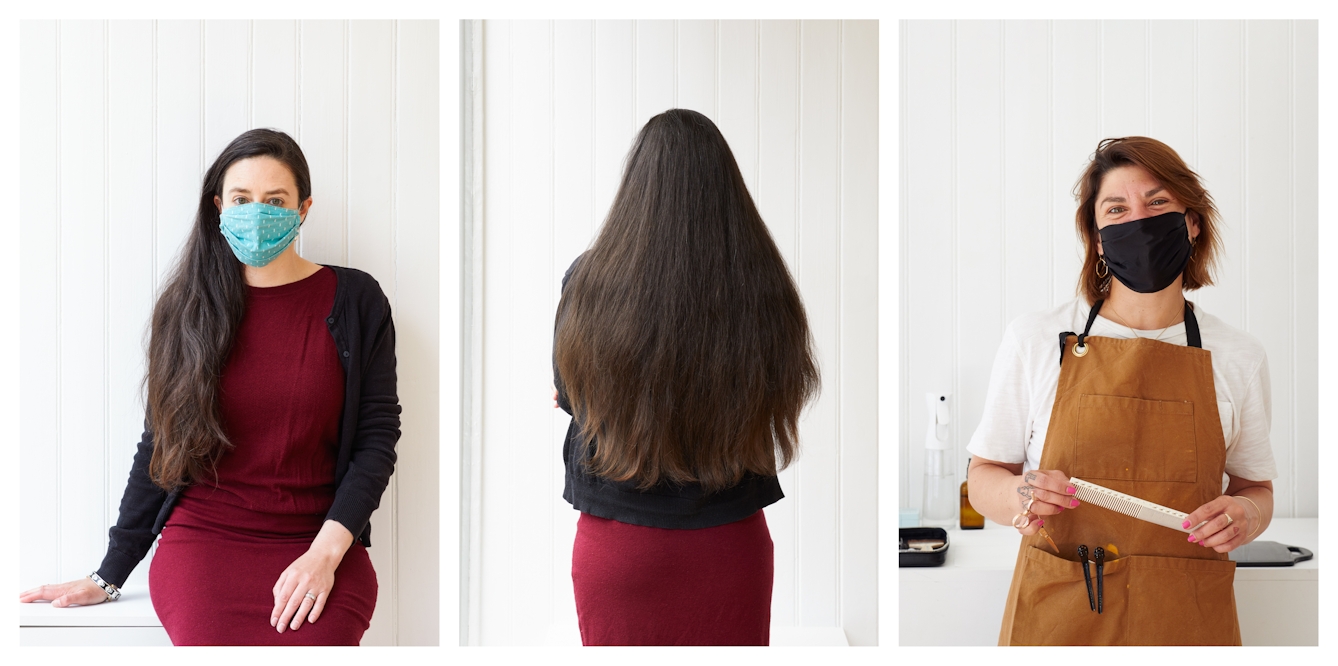
Emily donates her hair in May 2021, as the UK is slowly emerging from its third coronavirus lockdown. Both Emily and the hairdresser, Michelle Michelon, have to wear face masks. Emily’s hair is thick and long, reaching far down her back. She has donated her hair before, last cutting it three years ago.
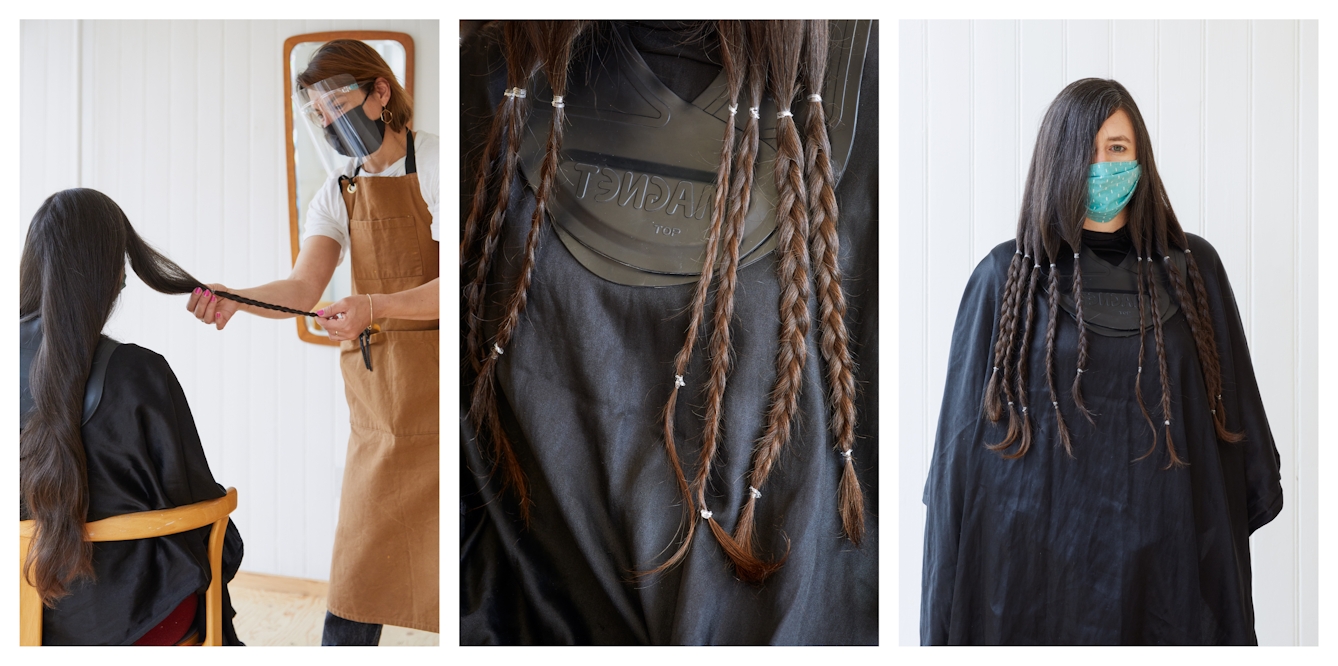
The process is straightforward. The hair must be at least 16 cm long, clean and dry. It should be made into several plaits or ponytails before being secured at the top and bottom and then cut. Michelle says Emily’s long hair is “amazing, like fabric”. She plaits it into nine braids.
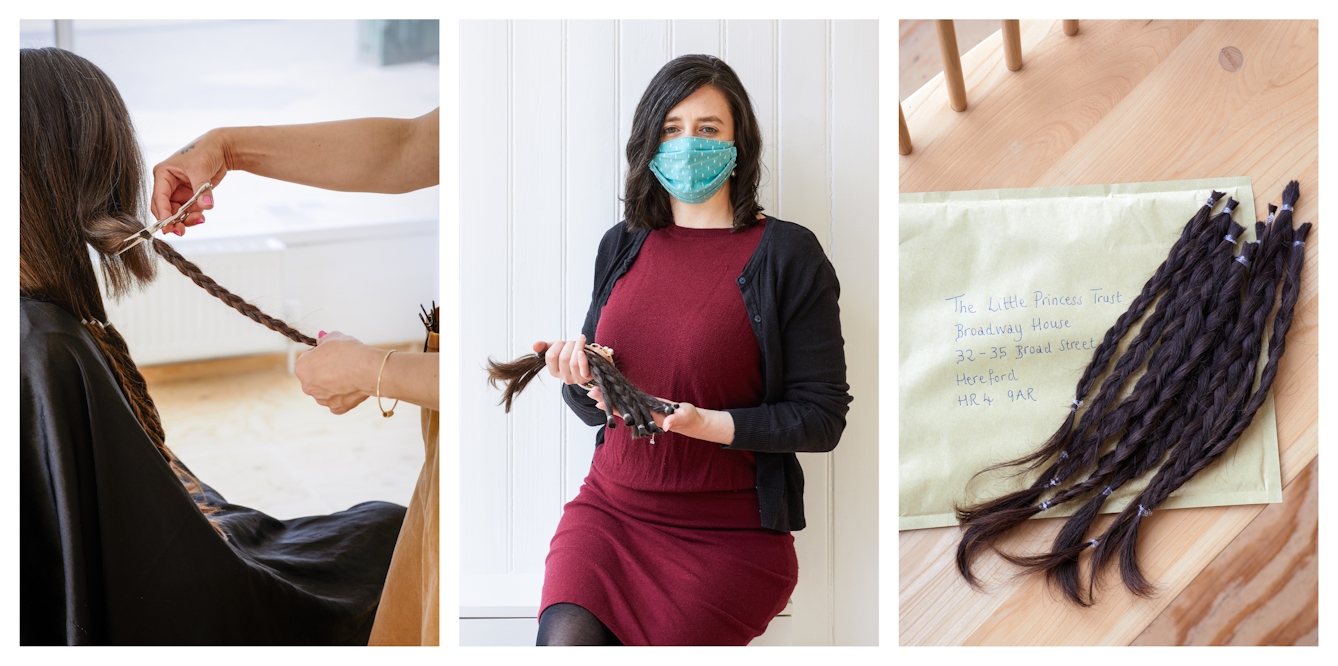
The nerves and excitement are palpable when Michelle picks up her scissors and cuts off each braid. The longest one is 15 inches. Along with a completed donation form, the cut hair is packaged up and posted to the charity.
The brave act of hair donation
Little Princess Trust relies on hair donations, inviting anyone with long hair to consider cutting it off and posting it to them. The longer the hair, the better – they’re especially keen to get donations that are 16 inches or more. The charity gets tens of thousands of donations a year and they need it: there are up to 15 different people’s hair within each wig.
Embracing a dramatic haircut is a significant ask. What motivates people to do it? “We recognise what a personal sacrifice it is,” says Phil Brace, the Trust’s Chief Executive. “I think people support us because they can see the tangible difference their donation makes on the life of a young person or child suffering hair loss. It’s so relatable.”
How does Teiva feel about the fact her wigs are made from donated human hair? “I feel proud of the people who have done it because it’s a brave thing to donate that much hair. If you’re used to having long hair and then you cut it short, it’s going to be a scary thing. When my hair grows long enough, I’ll cut my hair for the Little Princess Trust, and I’ll keep doing it every time my hair grows back.”
Teiva
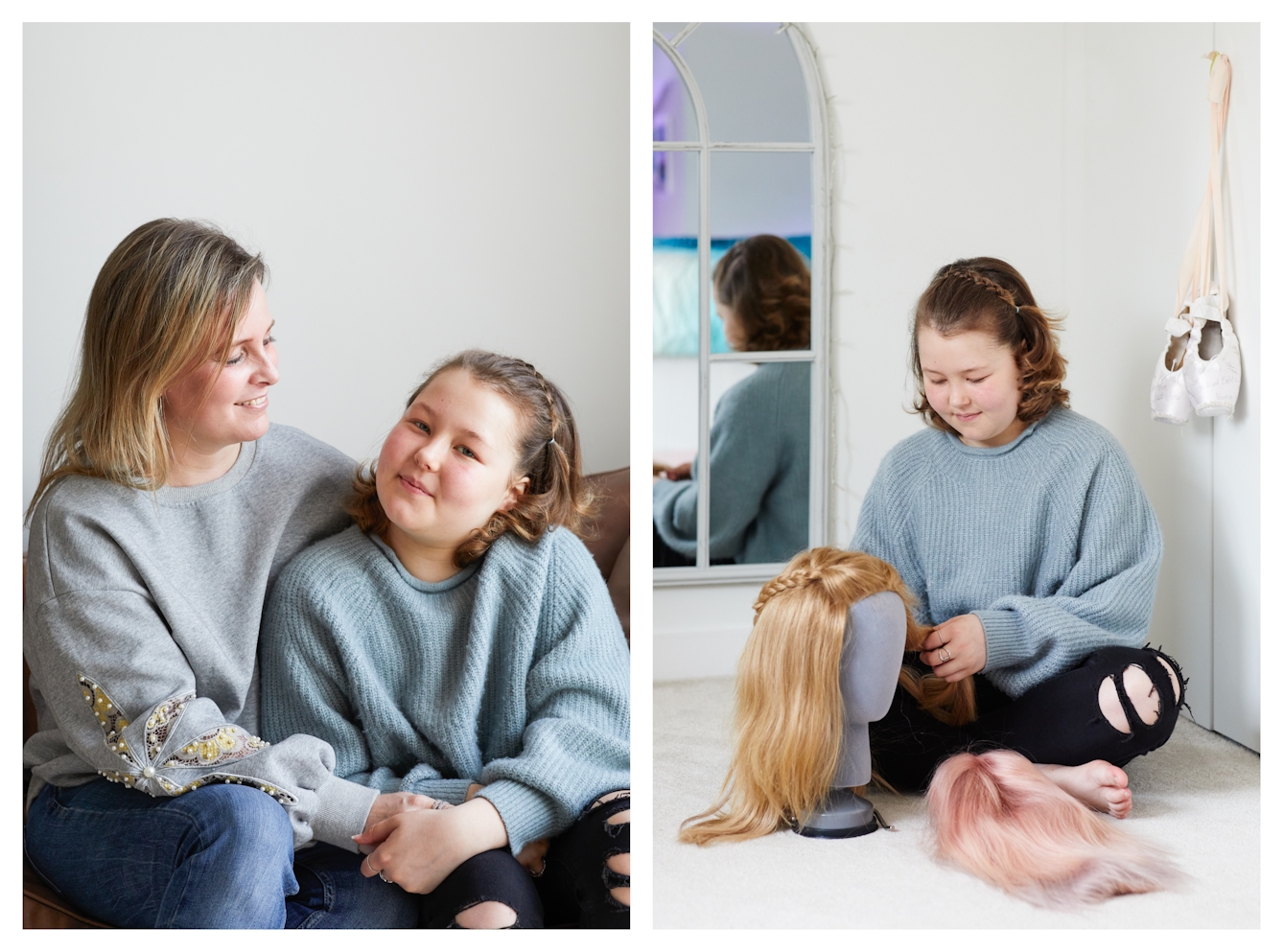
Having to answer Teiva’s question about whether her cancer treatment would mean she would lose her hair was one of Dawn’s worst moments. But the wig they received from the Little Princess Trust meant that Teiva had the option to look and feel normal again whenever she wanted. “I loved to brush them to make them fluffy and soft, and I loved plaiting them, like when I had my own hair,” says Teiva.
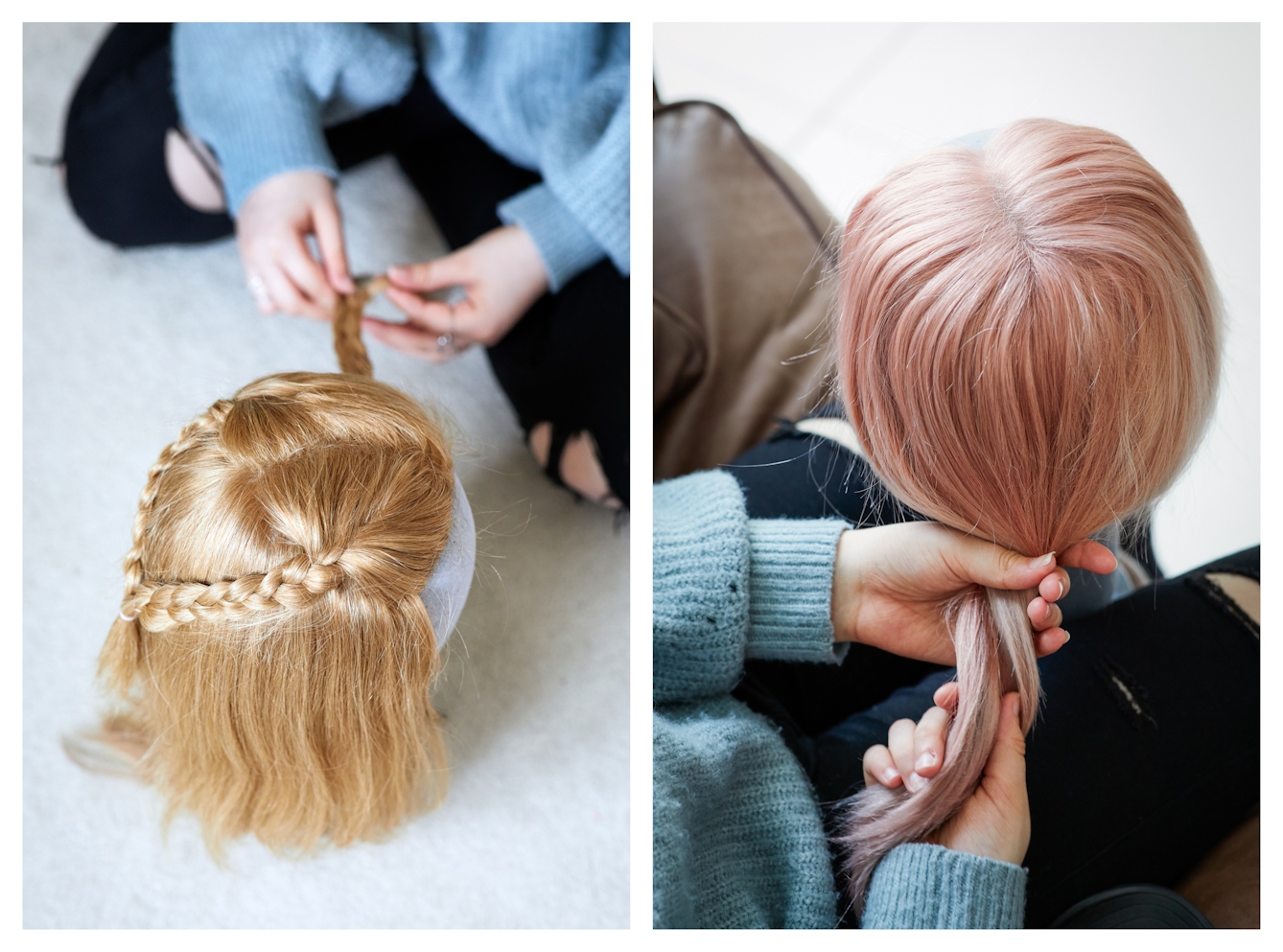
“A wig on a child does look like a wig on a child – with most children you can tell – but plaiting it made it look more natural,” says Dawn. Teiva’s real-hair wigs were much more comfortable than something synthetic would have been, but her scalp would still get itchy and hot if she wore them for a long time. The wigs made her feel good, but the pay-off was some physical discomfort.
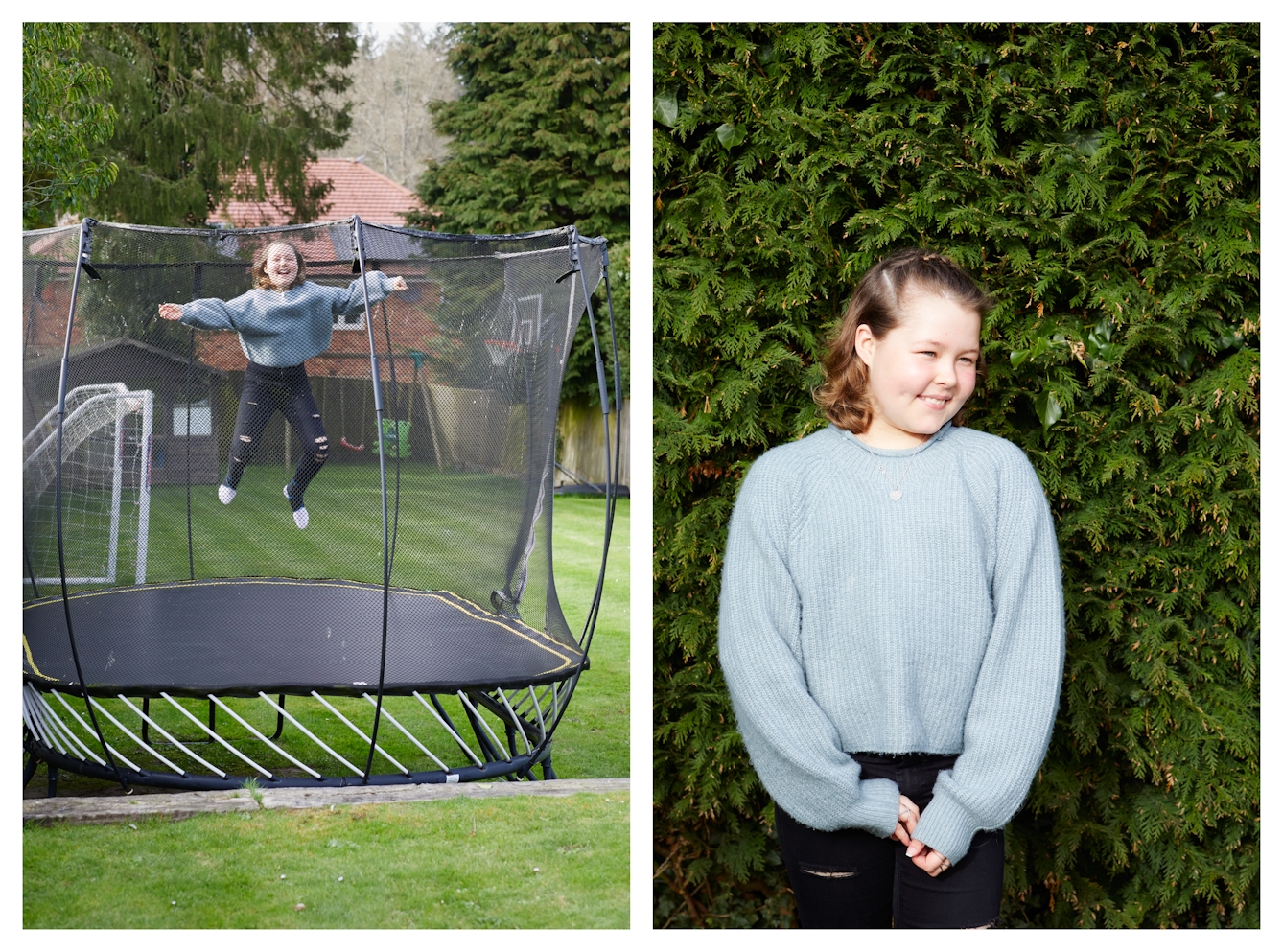
Teiva’s own hair has now grown back, but she hasn't forgotten the role her wigs played in giving her the confidence to face the world during her treatment. So much so that she is now an ambassador for the charity, supporting their work and raising awareness.
Having fun with wigs
However we choose to wear it, our hair is part of who we are, and a good wig can help someone to feel like themselves again. The option to not be bald was an important one for Teiva: it allowed her to face the world in a certain way on certain days. But there’s no doubt the wigs provoked mixed emotions, especially for Teiva’s mum.
“I actually didn’t like her in the wig, if I’m completely honest, because she didn’t look like Teiva to me,” says Dawn. “She’s got a perfect-shaped head, so she looked amazing without hair. I love the Little Princess Trust and everything they do, but from the family’s point of view, we found it hard to see her in the wig – we preferred the bald head – but I know Teiva didn’t. It’s important to recognise that.”
Before her treatment, Teiva’s hair was blonde, straight and fine. It’s grown back thicker and curly, light brown with sunny golden tips. Do she and her mum have any advice for someone facing hair loss because of chemotherapy?
“With every bad thing, you can find a good way to be with it,” says Dawn. “Know that it’s not for ever, but while you don’t have hair, it’s your opportunity to have fun, especially when you’re young. It’s definitely going to affect you, and that’s okay, but you have to make the best of it.”
Tevia would also recommend cuddling a cockapoo. Hers is called Rio. “He can be very cheeky and has a habit of not giving back the ball,” she says, “but he’s sweet and he loves cuddles. It’s really nice to have a pet in your house: a pet calms you down a lot and I found that really helpful during my cancer treatment.”
About the contributors
Carmel King
Carmel King photographs makers and manufacturers across the UK, documenting British craft and industry. She is particularly interested in capturing regions of the country that are known for specific crafts and long-running family firms, where skills and knowledge are passed down through generations. In October 2022 Merrell published ‘Made in London‘, which Carmel King co-authored with Mark Brearley, which looks behind the scenes of 50 workshops and factories across the capital.
Helen Babbs
Helen is a Digital Editor for Wellcome Collection.
